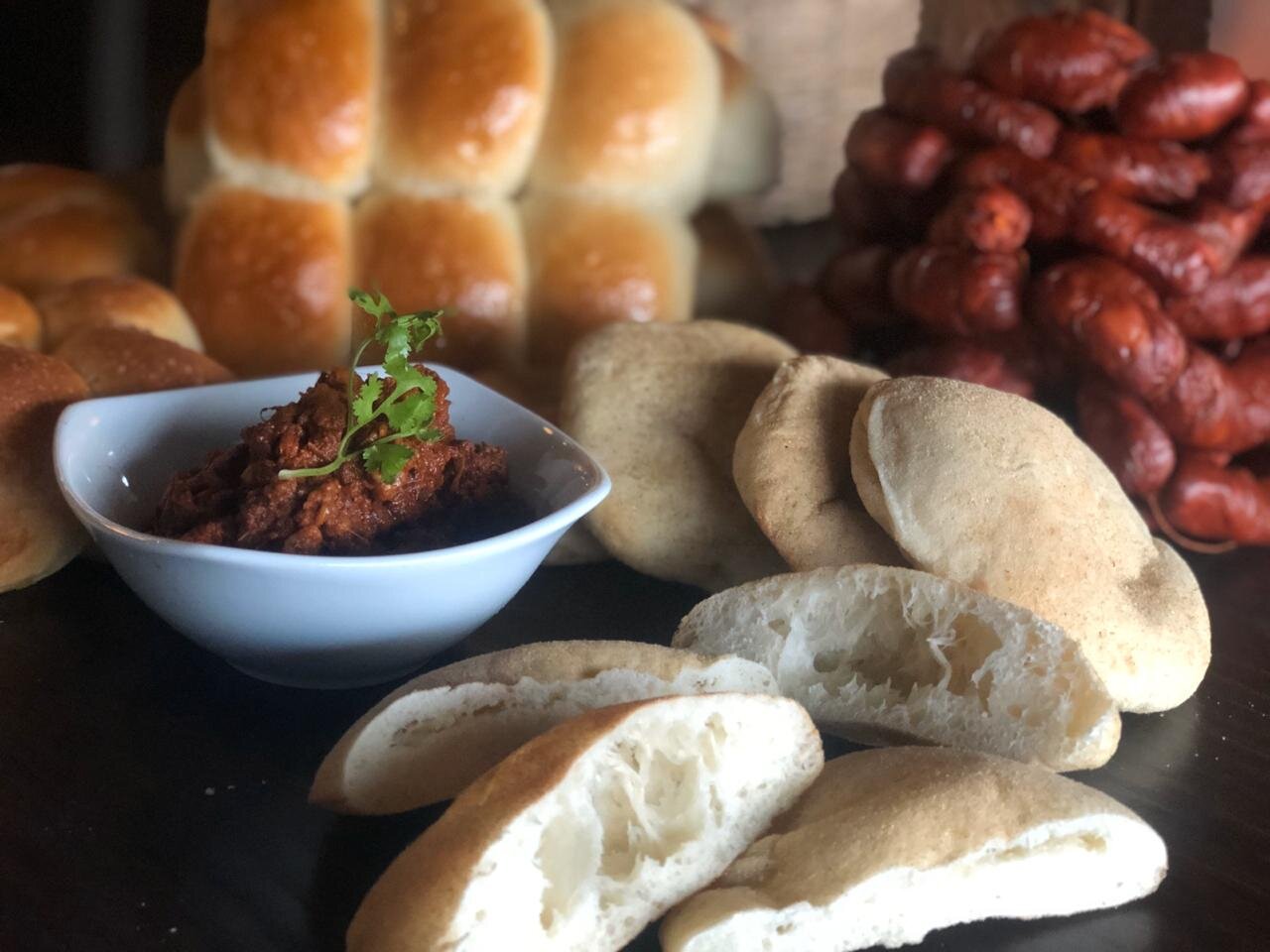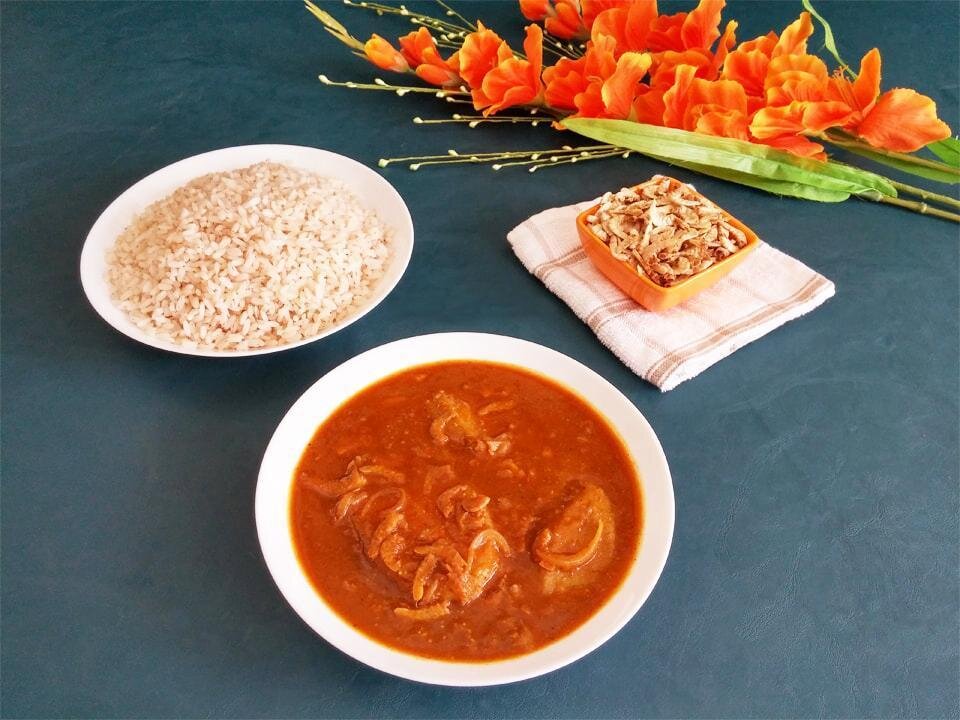The Elements of a Goan Monsoon Kitchen

The week of Purumentache, at the end of May, marks the start of a unique and distinctive culinary season, in preparation for the monsoon. Neetole Mitra take closer look at Goan Catholic and Saraswat traditions, and the influences that have shaped them.
Sometime towards the end of May, India’s smallest state begins preparation for a lockdown of its own kind. As the South-West monsoon inches closer to its shores, mad with the fury of winds that carry it over the Arabian Sea, Goa packs up its humdrum of activities and recedes indoors. The fishing community stays away from the ocean, most shops remain shut, and the incessant footfall of tourists stills.
Though the monsoon is considered off-season, many believe it is actually the best time to visit Goa; to enjoy the deep greens of its coconut and palm trees, contrasting against overcast skies, the red soil lending a bit of drama to the landscape, and the incessant pitter-patter of daily drizzles laying a melancholic routine of calm over the land. Add to all this, the heady aromas of its kitchens: the earthy mix of native masalas, the sourness of pickles, the pungent waft of dried fish and meat, all chased with a gulp of intoxicating feni, promptly followed by the quintessential afternoon nap. And there you have it — the most relaxing Goa experience.
For those of us stuck at home, threatened by the advances of this disreputable virus, Goa might be a far away dream. However, one can by all means re-create the flavours of a Goan monsoons at home. But what does it take to dish up the perfect monsoon meal, with the potential to transport the diner to the breezy beaches of Goa?
Goa begins preparing for this beloved season almost as soon as the rains subside mid-October. Sap is collected from the flower and fruit of the ubiquitous coconut palm, and left to ferment for four to six months. This will go into making toddy vinegar — a central ingredient of Portuguese-influenced Goan cooking, or the Catholic cuisine of Goa.
Chef Joel Murzello of The Fisherman’s Wharf (situated on the banks of River Sal, and offering a unique monsoon experience for its diners) tells me, “The Hindu or Saraswat tradition of cooking uses tamarind and kokum, but the concept of fermenting and pickling with the use of vinegar is something that the Portuguese brought to Goan soil.”
It wasn’t just vinegar. Led by Aphonso du Alburquerque in 1510, the Portuguese brought ingredients like chilies, cashew, coriander, potatoes, and pork. Vir Sanghvi, tracing the journey of pork to the Indian subcontinent along with Portuguese sailors, writes, “The Portuguese would put chunks of pork, and fistfuls of garlic, into barrels of vinegar. The vinegar prevented the meat from spoiling… they chose Goa as an encampment… because the locals liked pork...”
And with pork came some of Goa’s most iconic preparations: vindaloo and sorportel. But nothing says Goan monsoon more than choriz sausage; rightfully re-christened as the Goan sausage — feisty, crimson, rosaries of smoked pork seasoned with recheiad masala — a sinful affair; a glutton’s delight.
Preparing the sausage too, is a feisty affair. A recent video by celebrity chef David Rocco shows his local host marinating hand-chopped pork in fiery masalas, then squinting through the smoke that cures the sausage. Former editor of National Geographic Traveller India, Neha Sumitran, has a similar tale to share: “I’m up to my elbows in pork fat. I can feel chunks of lard wobble under my fingertips. The red chilli paste makes my skin smart, and vapours of potent, palm vinegar coil around my head.” Travel writer Stuart Forster, quoting Otto Von Bismarck, says it best: “The less people know about how sausages and laws are made, the better they sleep at night.”
Maybe that’s where Bina Azaredo comes in. She is the fourth generation to manage Costa’s — the family business her husband’s great grandfather Bernardo Francisco da Costa, established in 1885. Among the various Goan culinary delights they sell, choriz stands prominent. Bina offers me a traditional recipe, which involves boiling the sausage in water, and cooking it with onions and sometimes potatoes. Best paired with Goan pao (called poie), or eaten with rice.
Choriz stuffed poie
However, a conversation with chef Rommel Desousa of Pepper’s Gourmet Cuisine reveals something more intricate — a beef roulade that combines the heartiness of beef strips, with bacon and choriz in a single dish. Each slice of beef undercut is packed with a strip of bacon and choriz sausage, then carefully rolled and marinated in vinegar and salt for 3-4 hours. The chunky rolls are then cooked with finely chopped ginger, garlic, onions and tomatoes — a rich and aromatic affair.
The Portuguese may have brought pork and vinegar to the Goan party, but the natives welcomed them ashore with a bevy of homegrown spices. Stepping out of Goa’s cities and into its villages reveal spice plantations growing peppercorns, cinnamon, cloves, cumin, nutmeg, cardamom and more. Maria Dcosta from Raiya has been cultivating her own spice gardens, and supplying Chef Rommel’s kitchen with some of the best aromatic ingredients of the land for the last decade. And it is these spices that lend the Goan cuisine its unique identity.
The recheiad masala, which acts as the base for a huge range of preparations, is a coarse paste made of Kashmiri chilies, garlic, ginger, cloves, cinnamon, cumin seeds, turmeric powder, a little bit of sugar and salt. Besides pork chunks for choriz sausage, sun dried and salted Bombay duck, mackerel and prawn are also included in this potent mixture, and left to soak up aroma and flavour. This is known as the para pickle — a mainstay of the Goan table during monsoon months; the saviour of every simple meal of rice and curry. All one needs to do is scoop out a few of these pickled, masala-coated pieces and roast them.
While Catholic preparations like choriz find prominent feature in most Goa restaurants and roadside stalls, one needs to dig a little deeper for dry-fish preparations, even though stretches of land lay buried under layers of fresh-ocean catch after October, each year. Bombay duck, mackerel, prawn, squid, shark and more, are laid out to sun-dry, coated with a liberal sprinkling of salt. These will be sold in bulk during the Purumentache Fest in the last week of May, just before the state-imposed 61-day ban on fishing begins, keeping the fishing community off the unsafe waters of the Arabian Sea during June and July.
The Purumentache or Purmenth is a derivative of the Portuguese ‘provimento’ translating to provisions. This week-long fest marks the end of summer and dates back centuries, to times when utilities like refrigerators were not yet a part of everyday lives. Families would gather to stock up on masalas, pickled vegetables, crucial ingredients like kokum and coconut, and of course stacks of dry fish to see them through the monsoon months. For a sea-facing state where fish is considered a staple, it is a sorry Goan household that has to last the monsoon without it.
While dry-fish has seeped into Catholic cuisine, it is the Saraswat (Hindu) tradition of cooking that depends heavily on fish, coconut, local spices and souring ingredients like kokum, tamarind and mango. In Pilerne, Chef Peter’s Kitchen is one of the only restaurants in Goa that serves exquisite dry fish preparations, otherwise only be found in local homes. He was recently recognised as the ‘Best Chef of India’ in the non-hotel category, by the Department of Tourism.
“I love preparing grandma’s recipes,” Peter says jovially. “Anything that’s traditional and offbeat in Goa, and hard to find elsewhere, you’ll find in my kitchen.” His list of specials changes daily, and is often hand-written at the start of the day. Some favourites include the Haremass with Bingta (pork cooked with jackfruit seeds); a mildly spicy, very flavourful Kaldin Curry (fish prepared with coconut milk, green chilies and coriander) and a warm, sweet beverage called Vonn (made of jaggery, coconut and gram dal).
Vonn leads me closer in my search for a traditional Catholic recipe. This sweet beverage is part of an ancient traditional feast called the Bikrencheam Jevvon, which translates to ‘beggar’s food.’ “The day before Catholic weddings, a lavish feast is prepared with the purpose of remembering departed relatives and family members. This feast is served to impoverished members of the community. Vonn is usually consumed on site, while a dried version called Mergol is packed for later consumption.”
The main attraction of this feast is the samarachi kodi, an aromatic dry prawn curry prepared using 21 spices. Kodi literally means curry. Samarachi on the other hand comes from an interesting Hindu custom, and is derived from the word ‘samardem’ — an engraved round wooden box with eight bowls that store the 8 most essential masalas of the Konkuni kitchen — peppercorn, cloves, mustard, coriander seeds, fenugreek seeds, cumin seeds, cinnamon and star anise. The mother of the Konkuni bride hands this box over to her daughter as part of her dowry. The samarachi kodi is named after this box and is native to North Goa.
Dried prawns
Samarachi kodi
It is JessieD’Souza who leads me to this elaborate recipe. Jessie developed a passion for cooking at the young age of 13, while assisting her mother in the kitchen. Years later, she wrote a tribute to Goan cuisine on her blog Celebration In My Kitchen, in memory of her deceased mother. Six years on, her blog is a treasure trove of Goan recipes that celebrates the spirit of Goa, and takes it to the world. An expat herself, Jessie takes special care to share recipes that can be re-created anywhere. While sharing the recipe of samarachi kodi she emphasises, “I can make it in Canada. It’s so easy to find dried prawns everywhere now. It’s like being back home.”
And in that, is the essence of the Goan monsoon. It calls for a different kind of exploration. One that takes an internal plunge — into memories of the past, towards a forgotten way of life that brings everyone together, to celebrate family in the comfort of one’s home with a bellyful of soul-warming food.
Recipe: Jessie D’Souza’s Samarachi Kodi
Ingredients
1 large onion (chopped or sliced)
1 cup dried prawns
2 cups coconut milk
1 raw mango
2 tbsp oil
Salt to taste
For the dry roast
3/4 cup fresh grated coconut
8 red dried Kashmiri chilies
1 tbsp coriander seeds
1 tsp cumin seeds
1 tsp fennel seeds
1/4 tsp shahjeera or caraway seeds
1/2 tsp poppy seeds (khus khus)
1 cinnamon stick (2.5 inch)
2 green cardamom
4 cloves
10 whole black peppercorns
1 blade of mace (javitri)
4 petals of star anise (chakra phool)
1/8 tsp nutmeg
1/4 tsp mustard seeds
1/8 tsp fenugreek seeds (methi seeds)
1 tsp rice (red parboiled or while)
1/2 onion, roughly chopped
4 large cloves of garlic
1/2 inch ginger
1/2 tsp turmeric powder (do not roast)
Method
Pinch and discard the pointed tip of the head and tail of the dried prawn. Do not remove the entire head.
Soak dried prawn in water to soften.
Peel, wash and slice mango. Season with salt.
Dry roast all spices and grind to a fine paste with water:
Heat oil in a pan and sauté the onion until brown.
Fry the prawns after draining out the water.
Stir in the ground masala and cook well.
Rinse the blender jar with some water and add to the pan.
Add the coconut milk, mango and salt.
Add water to create gravy and bring to boil.
Serve with rice.
Neetole Mitra is a travel journalist and filmmaker. Follow her work here.
ALSO ON THE GOYA JOURNAL










